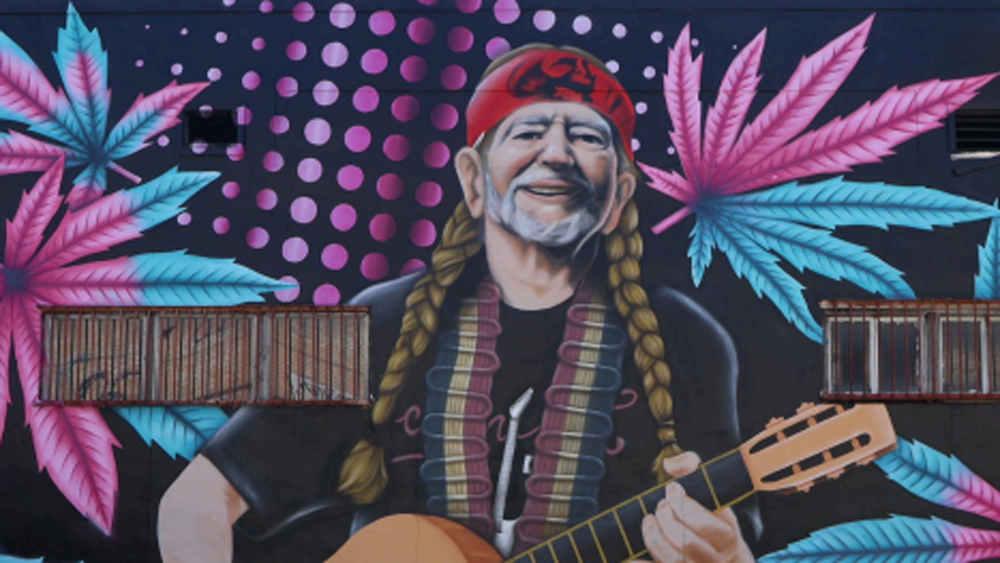The lead article of the New York Times Business section “Graffiti Goes From Eyesore to Asset” by Isabella Kwai caught my attention on April 6, 2024. I love the Times’ art stories but seldom see an art essay in the business section. The main premise of this story is explained in this sentence: “From Berlin to London to Miami, the wider acceptance of graffiti has attracted developers looking to expand into trendy areas, companies wanting to relocate to hipper neighborhoods, and brands seeking creative ways to advertise their products.”
Over the last few years, I have visited three
megacities–Berlin, London, and Miami–and witnessed firsthand a growing appreciation of public art and a persistent apprehension of graffiti. In essence, there is a pronounced difference between graffiti and public art.
Although Latino art was not mentioned in the Times article, we can learn much from Isabella Kwai’s observations regarding public art trends in Southwestern
cities. I have been following public art, especially the Chicano murals, since my graduate days at UCLA in the early 1970s. As an urban historian, I followed the rise of ethnic neighborhoods in East Los Angeles including the appearance of graffiti during that period. Community residents constantly painted over graffiti, much of which was gang-related. I also witnessed the artistic explosion of Chicano murals in Los Angeles, San Diego, and San Francisco. The murals were largely city-funded cultural projects.
In the late 1970s, Houston and San Antonio artists also gravitated to large public art. After moving to Texas with my family in 1980, I was anxious to see the work of Chicano muralists in Austin, our new hometown, as well as Latino art in San Antonio and Houston. I grew up in San Antonio and the city had its share of graffiti which everyone agreed was an eyesore. San Antonio public housing managers discovered that colorful murals versus graffiti were much preferred by residents. The city approved the painting of nearly 50 murals at Cassiano Homes in the 1980s, a true example of cultural invention and intervention.
In her reportage, Times correspondent Kwai suggested correctly that artists of public art “bring a sense of buzz to neighborhoods,” and their “newness, creativity, and trends” appeal to renters. Today, public art is on the rise in numerous San Antonio neighborhoods. We can find public art at the city airport, on columns supporting several highways and overpasses in Southtown, and on the walls of popular businesses in the center of San Antonio. In Southtown [the Southside of San Antonio], art entrepreneurs and painters Andy Benavides and Shek have been instrumental in identifying supporters and locations for new art projects.
Shek Vega of San Antonio is a prime example of an artist whose early artistic experiments were primarily tagging blank walls and adding graffiti where space allowed. In the last decade, Shek has emerged as a major player in public art. He led the way in creating a “mural park” under Interstate Highway 35 north of downtown.
A self-taught artist, Shek was born and raised in South San Antonio. His vibrant and imaginative public art
expressions attracted the attention of the Pepsi-Cola marketing team which featured him in a TV commercial engaged in mural painting and drinking cool Pepsi soda during breaks. Shek also founded the Los Otros Murals team which has worked on more than two dozen public art paintings in San Antonio.
Shek and the Los Otros Murals group paint murals and engage in creative work for the San Antonio Spurs, the city’s famous basketball team, and several other corporations. In a recent effort to expand their branding campaign, for example, the Spurs merchandising team
contracted Shek to design caps and T-shirts incorporating graffiti and mural art images.
Times writer Kwai found several urban planners who argued, “Street art had the potential to act as a powerful engine to turn some neighborhoods into economic and cultural centers.” Public artist Andy Benavides of Southtown San Antonio is wholly committed to transforming his neighborhood into an art district. Benavides studied commercial art at Burbank High School and San Antonio College. He also learned the art framing business his senior year in Burbank’s high school work program.
This experience later became beneficial while Benavides attended North Texas State University where he paid his college tuition with earnings from part-time work at a nearby frame shop. He completed his art degree at North Texas State University in 1990. Upon finishing college, Benavides moved back to SA where he started a commercial art business and an art framing shop in Southtown.
Benavides spends his days engaged in numerous art projects that include art designs for corporations and designs for gallery spaces for artists working in his building. He served as a consultant to the San Pedro Creek Cultural project in downtown San Antonio, one of the city’s largest public art projects of the last decade. Among Benavides’ current projects is the continued development of “Southtown: The Arts District.” He describes this as an effort to develop a five-square-mile area of artistic creativity in south San Antonio. He strongly believes that artists are visionaries. With his wife Yvette and their son Agusto [age 15], the Benavides family are committed to improving Southtown one building at a time. They are also committed to helping artists find affordable housing and work studios in South San Antonio.
Everyone who knows or works with Benavides is impressed with his passion for art. One of his new endeavors is the preparation of the next generation of artists through the non-profit art education program S.M.A.R.T [smartsa.org] where he and Yvette currently teach 450 elementary students.
San Antonio is a historic city with five Spanish-Mexican missions awarded World Heritage status. The Alamo City is a destination city and has the largest number of tourists in the state of Texas. The artistic success of Latino artists over the last quarter century in public art contributes to the city’s designation as a cultural oasis.
Latino Art Enhances San Antonio’s Public Spaces






